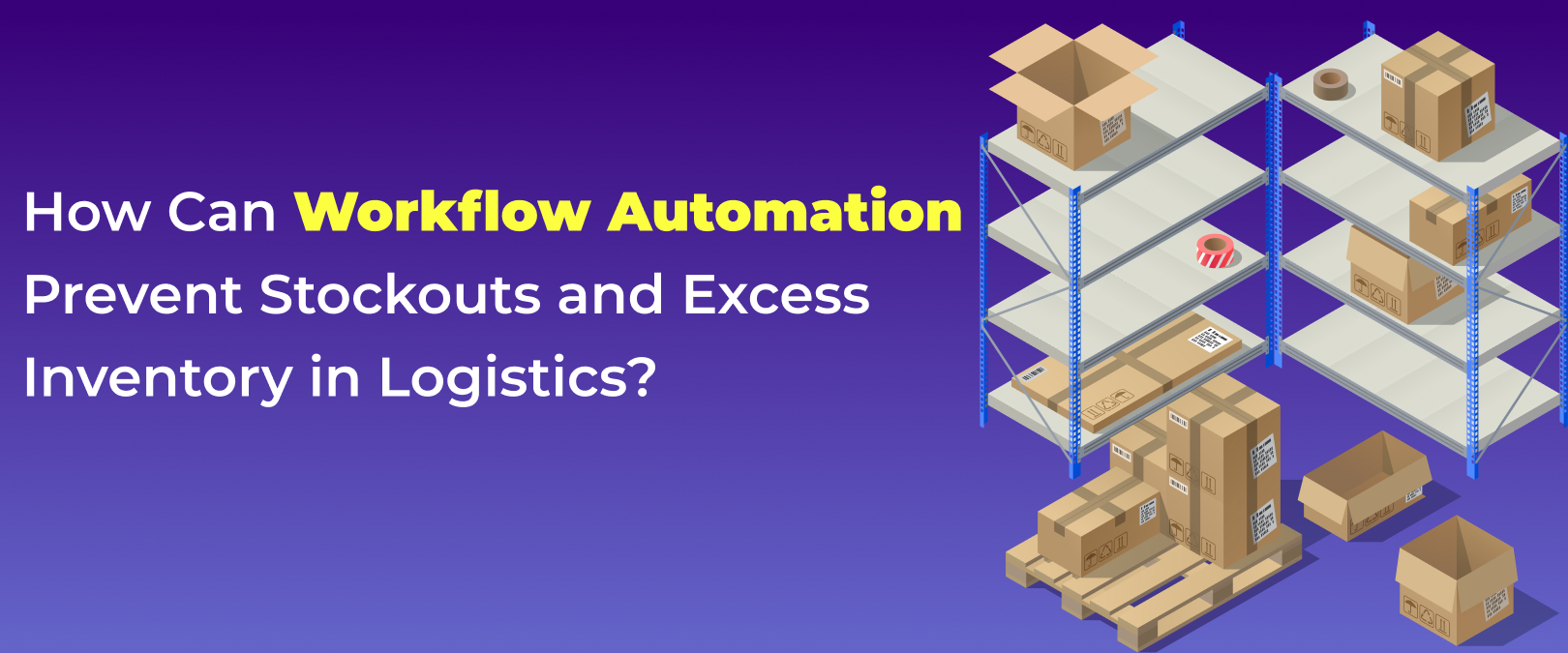
How Can Workflow Automation Prevent Stockouts and Excess Inventory in Logistics?

As you tackle the complexities of inventory management, the fear of stockouts and excess inventory may loom large. But fear not, for in our quest for solutions, we stumble upon a powerful ally: workflow automation. Join us as we uncover how this technological marvel can revolutionize your logistics operations. In this comprehensive guide, we’ll delve into the strategies and benefits of leveraging workflow automation to prevent stockouts and excess inventory, ultimately optimizing logistics operations for success.
Understanding the Problem:
Before delving into solutions, it’s crucial to understand the root causes of stockouts and excess inventory in logistics. Stockouts occur when demand exceeds supply, leading to unfulfilled orders and dissatisfied customers. On the other hand, excess inventory results from overestimating demand or inefficient inventory management practices, tying up capital and warehouse space unnecessarily. This is why your warehouse needs a workflow automated software.
Challenges With Typical Approach
The journey to effective inventory management is fraught with obstacles, each demanding careful consideration and strategic intervention.
1. Data Fragmentation
Traditional inventory management often relies on disparate systems and manual data entry, resulting in fragmented data across departments. This lack of integration inhibits visibility into inventory levels, demand patterns, and supplier performance, making it challenging to make informed decisions.
2. Forecasting Inaccuracy
Accurately predicting demand is a Herculean task, especially amidst volatile market conditions and shifting consumer preferences. Manual forecasting methods are prone to errors and biases, leading to overstocking or understocking situations.
3. Inefficient Processes
Manual workflows plague logistics operations, sapping productivity and increasing the likelihood of errors. Tasks such as order processing, inventory reconciliation, and supplier communication are time-consuming and susceptible to human error, delaying response times and hindering agility.
Get a free Consultation WhatsApp
How to Prevent Stockouts and Reduce Excess Inventory?
Here are some keyways workflow automations can prevent stockouts and excess inventory in logistics:
1. Streamlined Data Collection
Manual data collection processes are prone to errors and inefficiencies. With workflow automation, logistics companies can streamline data collection from various sources, including sales transactions, customer orders, and market trends. By automating data entry and aggregation, organizations can ensure accurate and up-to-date information for demand forecasting.
2. Real-time Analytics
Workflow automation enables real-time data analysis, allowing logistics companies to identify trends, patterns, and anomalies that may impact inventory levels. By leveraging advanced analytics tools, such as predictive modeling and machine learning algorithms, organizations can generate more accurate demand forecasts and anticipate fluctuations in demand with greater precision.
3. Automated Replenishment
Manual inventory replenishment processes are often reactive and prone to delays. With workflow automation, logistics companies can implement automated replenishment systems that trigger reorder points based on predefined criteria, such as inventory levels, lead times, and sales forecasts. By automating the replenishment process, organizations can minimize the risk of stockouts and ensure timely replenishment of inventory.
4. Inventory Optimization
Workflow automation facilitates dynamic inventory optimization by adjusting inventory levels in response to changing demand patterns and market conditions. By analyzing historical data and performance metrics, organizations can identify opportunities to optimize inventory levels, reduce carrying costs, and maximize inventory turnover.
5. Enhanced Collaboration
Workflow automation fosters collaboration and communication across departments involved in inventory management, such as procurement, warehousing, and sales. By streamlining workflows and enabling real-time data sharing, organizations can improve coordination and decision-making, leading to more effective inventory management practices.
Take Away
Workflow automation offers logistics companies a powerful tool to prevent stockouts and excess inventory by streamlining data collection, enabling real-time analytics, automating replenishment processes, optimizing inventory levels, and enhancing collaboration across departments. By leveraging automation technologies, organizations can achieve greater efficiency, accuracy, and responsiveness in inventory management, ultimately improving customer satisfaction and profitability.
Experience the difference automation can make in your inventory management. Book a demo of our workflow automation software today and discover how you can eliminate stockouts and optimize your logistics operations. Don’t miss out on the opportunity to revolutionize your inventory management process!
Get a free Consultation WhatsApp













